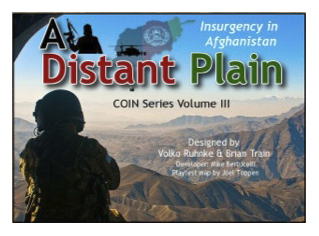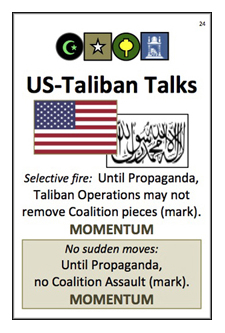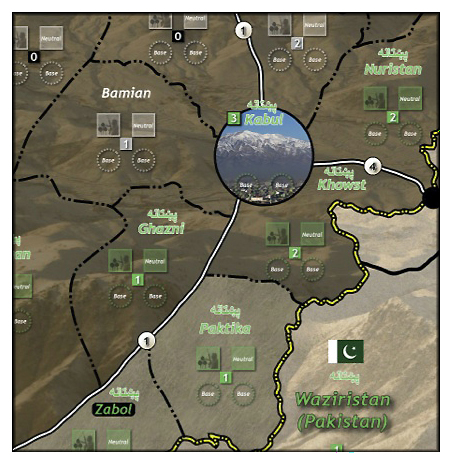 |
Keep Calm and Grog On! |
|
| Home | About Us | Article Index | Forums | Dice | GrogShop | GH ON FACEBOOK | GrogNews |
Let Your Grog Flag Fly!Recent ArticlesGARPA 17, 4/26/13 SimCity AAR Part 1, 4/25/13 Announcing MayViation, 4/24/13 Second Look at Wargame AirLand Battle, 4/21/13 First Look at Wargame AirLand Battle 4/19/13 AAR of Dark Age Minis Battle, 4/18/13 Video Review of Zulus on the Ramparts, 4/14/13 GARPA 16, 4/12/13 Crusader Kings II AAR Part 16, 4/11/13 Book Review: Ninja: 1000 Years of the Shadow Warrior, 4/10/13 Review of Bioshock INfinite, 4/7/13 Review of XFX PRO650W Core Edition PSU, 4/5/13 Civilization V AAR, Part 13, 4/4/13 Fire with Fire, 3/31/13 GARPA 15, 3/29/13 Civilization V AAR, Part 12, 3/28/13 Wheaton INterview, 3/27/13 March Mayhem Winner, 3/25/13 Warlock Multiplayer AAR, 3/21/13 WWII PTO Alternate Histories, 3/20/13 GARPA 14, 3/15/13 Crusader Kings II AAR, part 15, 3/14/13 Civilization V AAR, part 11, 3/7/13 Prezcon Convention Coverage, 3/2/13 Civilization V AAR, part 10, 3/3/13 |
Designers' Interview - A Distant PlainBy Brant Guillory with Brian Train and Volko Ruhnke (designers), 29 August 2012Building on the COIN series for GMT, designers Brian Train and Volko Ruhnke have teamed up for a hard look at Afghanistan with their upcoming multi-player counterinsurgency game, on pre-order now with GMT Games.GH: OK, now you've both got already stellar reputations as game designers tackling tough conflicts, so how did this collaboration come about? Were you getting together specifically to work on an Afghanistan game, or were you a collaboration in search of an interesting topic? BT: “Stellar”? Well, I might have been in the designing end of things for longer than Volko, but in terms of name recognition and overall sales, I’m still a white dwarf. Volko has scored three big hits in a row with Wilderness War, Labyrinth, and now Andean Abyss. I had helped in a playtest of Andean Abyss in 2011 and was very impressed by Volko’s COIN system. So when he contacted me with the proposal that we work together, I jumped at it. VR: Thanks Brant! I’d say more the latter. I knew much of Brian’s work. His Algeria design had been a key influence on my own COIN Series system, so I figured that we could produce something harmonious together. I felt that Brian’s work deserved even wider distribution and suggested to him that he ought to do a design for my publisher, GMT Games, in light of GMT’s stellar production values and marketing reach. I added to that the suggestion that he ought to do an insurgency game with me, and make it part of the COIN Series—he could choose the setting. He agreed and chose modern Afghanistan. BT: I suggested Afghanistan as a topic because I had already designed or done development work on several operational, campaign-level Afghanistan games (namely, Kandahar Province and none yet officially published) but wanted to do something on the entire war – until now, the only games to deal with conflict over the whole of Afghanistan have been by Joe Miranda (Holy War Afghanistan, First Afghan War, Second Afghan War, Asia Crossroads) for other time periods. I think it was about time to try and tackle the Fifth Afghan War (or maybe it’s the Sixth) at the strategic scale, in a way that highlighted the asymmetric capabilities and intentions of the forces involved.
Note that all images are from current playtest versions of the game, and are not likely to reflect the final artwork once the game is ready.
GH: What was the division of labor like and how did it evolve? BT: Volko’s work on Andean Abyss was the best jump-off point for this game. It was not difficult to take the rules for this earlier game and do some addition and subtraction of concepts and mechanisms, since the COIN system he has developed is both sound and extremely clever. I think the major work involved, besides the prototype map, was in developing cards for the Event Deck and fine-tuning the victory conditions for each of the four factions. Volko and I swatted concepts and tweaks for these back and forth very quickly, and within ten weeks (since we both have day jobs) we had a worked-out design ready to playtest. VR: Brian has deeper background on Afghanistan than I do, so he has provided most of the subject matter expertise, while I have guided the graft onto my COIN Series game system. Brian did the prototype map with inputs from me and came up with most of the list of events for the deck. I took his inputs on the Factions’ victory conditions and special abilities and fleshed out the operations menus and order of battle. Kicking things around together, and with thoughts from GMT president Gene Billingsley, we together came up with side mechanics new to the Series—Government Graft, the Islamabad Track, and so on.
GH: A Distant Plain is supposed to build on the Andean Abyss system. Tell us a little about the evolution of the system, and how it draws from its card-driven ancestors? What new wrinkles have been introduced specifically for A Distant Plain? BT: When I first met Volko in person, at the Connections wargaming conference in 2011, I was touched when he told me that my game on the Algerian War (which itself is one of a systemic family of counterinsurgency games) had influenced his development of the COIN system. Wargame designers steal ideas from each other all the time, but readily assign intellectual credit where it’s due – I’m happy with that state of affairs! Volko’s COIN system is not what I would call a card-driven one, in the sense that his earlier game Wilderness War is. Instead it’s more card-assisted: cards are turned up in sequence but players do not hold hands of cards; a player’s choice of whether or not to implement a card for its effect, or to have a regular turn, will have significant consequences on the other players; and so on. Frankly, I think it’s brilliant. VR: The COIN Series system, introduced in Andean Abyss, is similar to card-driven games in leveraging player tradeoffs between events and a menu of operations to bring all manner of historical instances, personalities, and capabilities into the game’s narrative. But I sought with the unique way that the Series uses cards and ops menus to get away from too much focus on hand and deck “management” to more realistically focus on what is happening on the geography. Similarly, to keep the focus on higher-level inter-factional politics rather than, say, combined arms tactics or some such, the system uses easy to learn area-control and mostly diceless interaction of wooden pieces, rather than combat results tables and factors on chits. BT: I see a major difference from Andean Abyss is the nature of the four factions. The former game had the government against three insurgents, although the latter were all very different from each other. In this game we have the Coalition and the Government of the Islamic Republic of Afghanistan (GIRoA), two forces with very different capabilities and aspirations, yoked together in what amounts to a marriage of inconvenience, versus two insurgent factions that are both opposed to the Government and foreign interveners, but spend a great deal of effort actively fighting each other as well. It’s also interesting that two of the factions – Coalition and Taliban – have unassailable rear areas that can only be made more or less hospitable through implementing event cards that relate to wider events outside Afghanistan (diplomatic understandings, etc.). VR: For me, it’s a very exciting development of the system for a number of reasons. The first is the first time that an international counterinsurgent faction (the Coalition) is present—posing new problems of getting forces into and out of the country, new dilemmas of balancing domestic factions and getting timely results at low cost in casualties, and, especially, navigating a frustrating relationship with a COIN ally (the Afghan Government) who will be pursuing its own, often incompatible objectives. In addition, while Andean Abyss and Cuba Libre players will recognize similarities to those games’ Factions, in A Distant Plain’s Afghan Government, drug-running Warlords, or rebel Taliban, the interweave of new victory conditions, capabilities, and events makes each Faction play quite differently than any counterpart from an earlier volume. The Taliban, for example, take advantage of a true sanctuary and sponsor in Pakistan, as well as Afghanistan’s ethnic terrain, via their special strengths in Pashtun-based areas.
GH: How hard is it to design some sort of end-state for a conflict, when the conflict is still going on, and the end-state may not resemble anything in the game once it's all said and done? VR: I see the issue as a variant of the general challenge of selecting appropriate start and end points to the simulation of conflicts that ebb and flow for years—which describes most insurgencies. For Andean Abyss, I had decades of internal Colombian conflict to choose from. I chose to cover the mid-1990s to early 2000s for a set of reasons, having to do with the rapidly rising and falling fortunes of the four factions involved in that period. In A Distant Plain, Brian and I are not trying to forecast Afghanistan’s “end state.” We wanted to let players kick around inside the insurgency and counterinsurgency there that is still going on today, but all the specific events depicted are in the past (albeit recent) or are might-have-beens. So to think of the game ending with the situation about now, in late 2012 or so, would be most on the mark. By the same token, we don’t start with the Coalition’s arrival in 2001 but rather in late 2003, because that is the time that the Taliban insurgency is starting to gear up. BT: I think the hardest games of all to design are the ones about conflicts that are still going on, because you do not have the benefit of hindsight on the ultimate effectiveness or impact of what actually happened. I also think these games are also the most important ones to design, in relation to AJP Taylor’s famous quote that “History is what happened, in the context of what could have happened at the time." We need games on contemporary conflicts, not necessarily to derive some kind of clairvoyance about the ending, but to organize our current understanding of the conflict, as we continuously try to organize our understanding of the world around us. VR: Players in the game are looking for an end state, shaped by their various victory conditions. But Brian and I came up with those victory conditions based on what we judge the Factions have been attempting to achieve, not on any call about how it will end up. The Coalition player is trying to “stabilize” Afghanistan—in the Coalition conception, by developing a central Government that has strong support among the population—and get its troops out without too many casualties. In the game, that might happen or it might not. We’re not predicting anything. BT: Absolutely, we do not claim any predictive value or political agenda for this game. It does not present any Magic Bullet, perfect plan or pet theory for a never-fail solution to this war. We also fully expect that, now and in the future, to get a bollocking from people (many of whom will never have played the game) for our foolish predictions, wrong-headed assumptions, crank theories, and presumed alliance with the Forces of Darkness in designing it. VR: Now, if someone out there were to be in the forecasting business, would they gain anything useful from the (much simplified) model of the Afghan insurgency that is in the game? They may well. We make some calls about what the factions are after, their strengths and weaknesses, and how that relates dynamically. But any forecaster would have to decide for themselves what parts of the game’s model are apt and which off, and then do the hard work of relating all that to what is yet to be. BT: However, we would like to see this game in the hands of players before 2014, the target date for comprehensive withdrawal of Western troops from Afghanistan, since in game terms this would be the equivalent of the Coalition player excusing himself from the game because he has to get up early for work tomorrow.
GH: What are some of the sources you were able to draw on for the events in the game, and the factions and their behaviors? How much of the research was pure open-source (media/web research) and how much of it was you guys digging into interviews, military documentation, after-action reports, and other war stories for anecdotal events? VR: I’ll defer to Brian, as he has been the subject matter expert on the project! BT: Of course we did not have access to any classified material, but I found a tremendous amount of material available – much of it on the Web, at military-related websites. Some sites and books of course were much more useful than others, and most of the work is sifting through what you’ve found and trying to in effect triangulate on certain numbers through corroboration from different sources. I accessed a lot of discussion papers, reports to Congress, and paper books for a wider focus on what drove the course of the conflict for each of the four factions. The game has three scenarios – beginning in 2003, 2005 and 2009 but all ending in 2012 – and there are quite a few websites that contain useful metrics for how things stood at different points in time, e.g. the Brookings Institute’s Afghanistan Index or the UN High Commission on Refugees reports on Afghan population displacement and repatriation.
Continued in Part 2 of the interview!
Brian and Volko have graciously agreed to take questions from readers in our forums for about a week after this interview runs. Please drop in and ask away - they are insightful and articulate guys who will know doubt offer thoughtful responses to your queries. Or at least fake it really well! |
Please support the folks that support GrogHeads
|
Copyright ©2012-2019, Grogheads, LLC. All rights reserved in the United States and throughout the world. All other products and copyrights mentioned on Grogheads, LLC are the property of their respective companies, and Grogheads, LLC makes no claim thereto.
GrogDice - Refresh the screen to roll a new set!
Or go here to roll a LOT of dice


